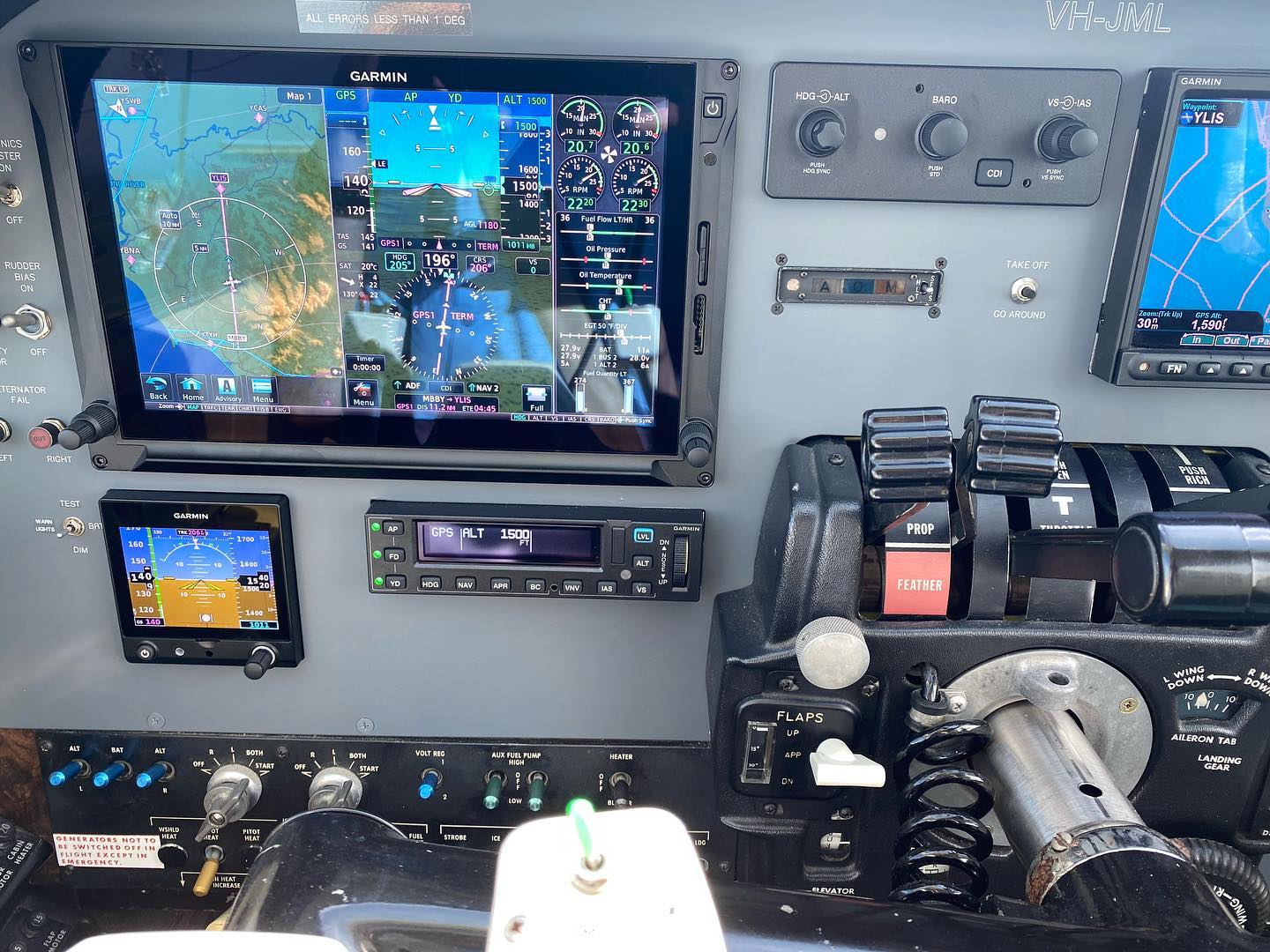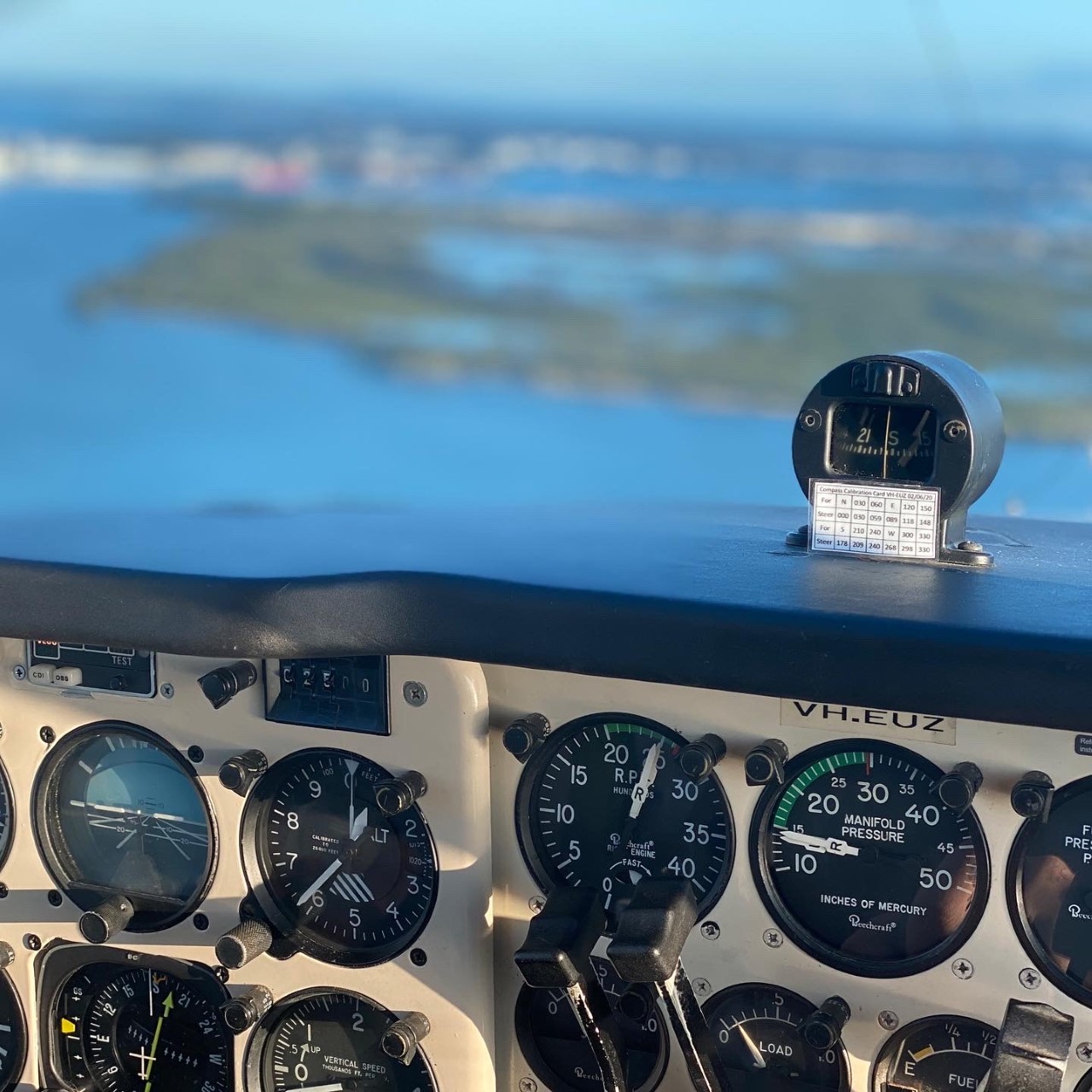Complete your Multi-Engine Instrument Rating in approx 4 weeks on our Beechcraft B55 & B58 Barons at a similar cost to a less useful training twin. Have you ever seen a job ad on AFAP that asks for Diamond, Duchess, Seminole or Seneca time? We haven’t, but we’ve seen plenty that ask for Baron time. We encourage potential students to contact GA employers to find out what they recommend as an MEIR training aircraft for their prospective or current employees – the answer is unlikely to be one of those four. Also ask these employers which training organisation they recommend for MEA/MEIR training – we are fortunate to have strong professional relationships with many real world GA & even airline employers.
Our four Barons are also well-equipped, well-presented, company-owned (and therefore we have complete control over their availability and aspects such as maintenance standards and upgrades) and competitively priced examples of these popular charter machines.
“You guys deliver a great product”, Ben Wyndham, CEO & Chief Pilot, Airspeed Aviation (Ben has employed three of our previous students into his multi-engine IFR charter operation).
“Couldn’t recommend this course any more. Professional instructors, efficient training and wonderful aircraft. One of the best aviation experiences of my life”, Tim Stott, FAST Aviation MEIR graduate, December 2021 (now Scoot A320 FO)
Many of our MEIR course graduates are now flying for airlines & GA operators all over the world – take a look at our Past Student Achievements page. Our graduates are now working for operators including Qantas Mainline, Jetstar, Virgin Australia, Alliance, Qantaslink, Air North, Cathay Pacific, REX, Link Airways, National Jet Express, RFDS, and also many of the US-based jet operators (e.g. Kallita, Skywest, Jetblue).
Unlike many flight training organisations that rely on paid advertising and prolific social media posts to maintain interest in their business, we are proud that our reputation and word of mouth referrals keep us fully booked and busy.
We work as a collegiate group of instructors and examiners, and we consider and treat our students as our industry colleagues. Our students become part of our team while they are training with us. There are no epaulettes, no egos, and none of the other hierarchical distinctions between staff and students (and often between staff and other staff) that you will see at many schools.
Unlike many instructors that have never flown paying passengers on a commercial operation, all of our instructors have real world commercial experience outside of a flight school environment and all have been trained within our own training system. As we are very focused in the scope of training we offer, we are able to provide very standardised, consistent and proven training while at the same time allowing our students to benefit from exposure to a breadth of real industry experience. Collectively, our instructor group have logged over 45,000 hours of flight time between them.
We are fortunate in that the legitimacy of our training has been industry-recognised, and we are often contacted by GA employers from NSW, QLD and the NT when they have pilot vacancies to fill. Many of our graduates now work for the companies that contact us (some in Chief Pilot and other management, and therefore recruiting, roles). Like most opportunities in aviation, it will always come down to being in the right place at the right time with the right personality and the right attitude, and also the right aircraft types in your logbook.
Vocational pilot training should provide employable skills and experience, and we are proud to provide our graduates with both. We take pride in taking CPL holders from diverse backgrounds and turning them into employable GA industry assets. We are proud that many of our graduates have progressed quickly through to senior GA & airline pilot jobs.


